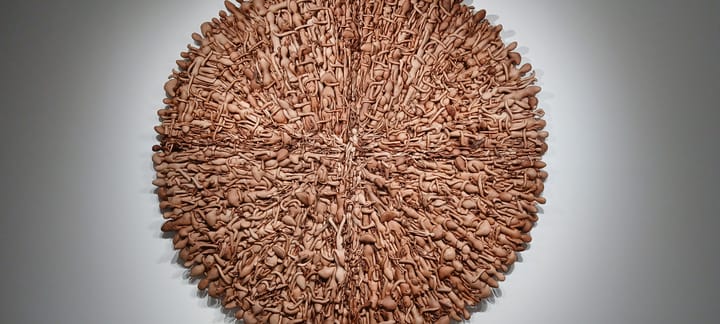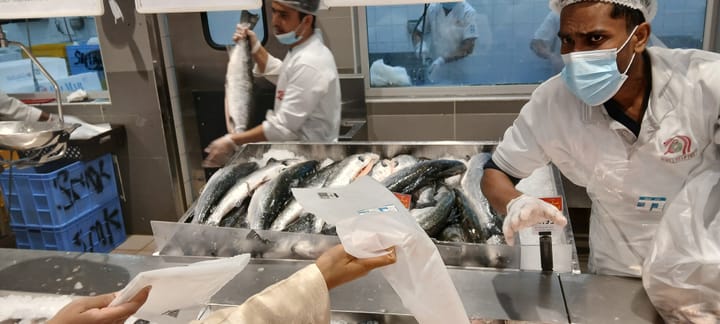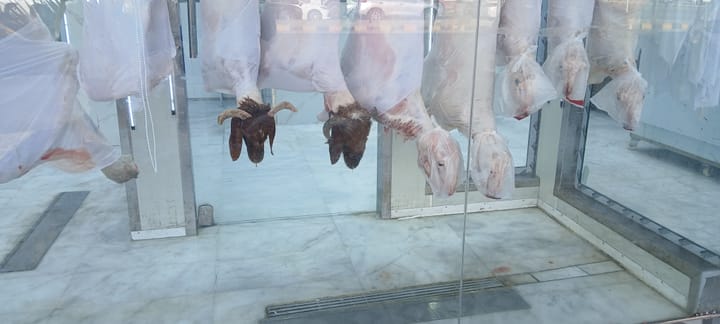Minus workshop 5, part 1: what for therapy is the cause for theatre is the effect
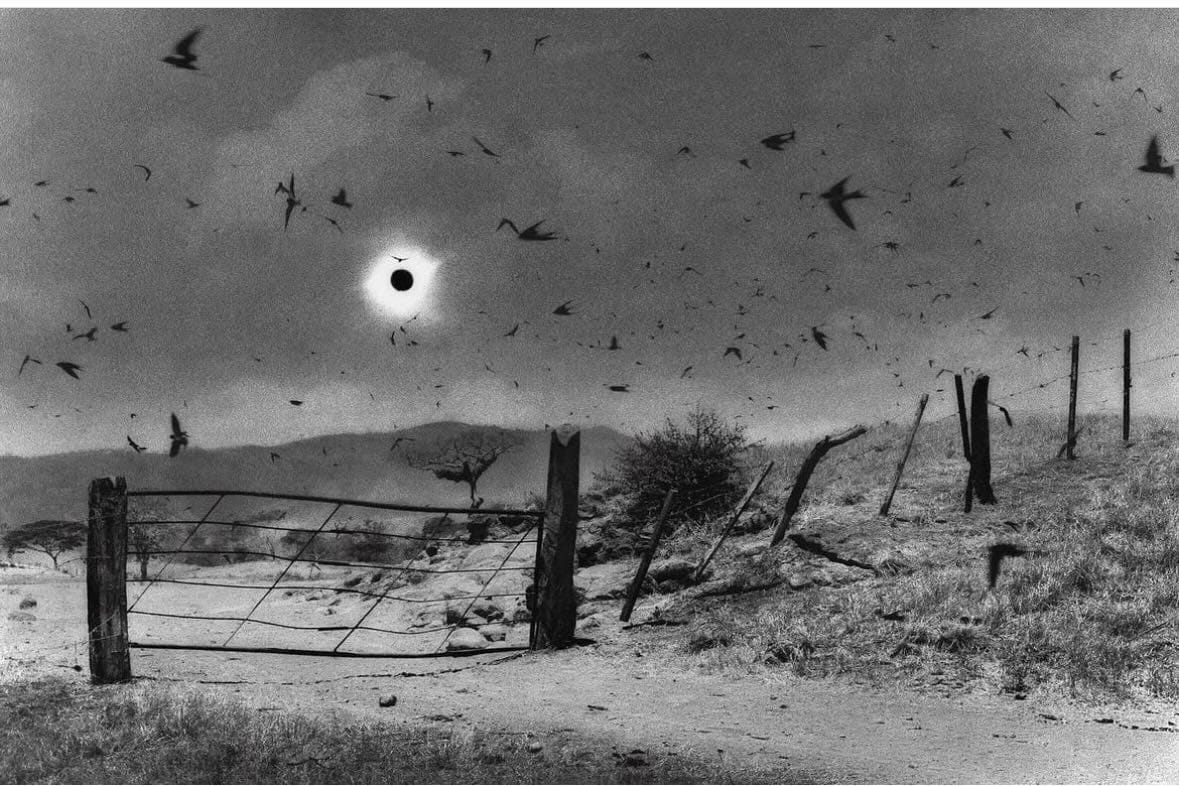
Minus Theatre at AUT was all about the encounter. It went from Deleuze to Lingis: in the first is the shock of the encounter which breaks us out of habit, the event; in the second is the imperative of acknowledging the elements supporting us presupposed by the encounter. They are, since we are both here, in the event, facing one another, breathable air, life-supporting warmth, nourishment from the earth in the processes going on in our guts, feeding us with life (in which the health of the earth must be included), and water, the fluids and our fluidity, the most magical because the most enabling, from the fact we are watery beings. And there is a fifth the inclusion of which started for me in Japan, the positive void. From Catherine Keller's tehomic theology (The Face of the Deep, 2002), I take it to be the deep, the interval and transcendental plane all at once; and, for us, for theatrical perception, the stage. For Keller the positive void of the formless, over which the virtual forms shiver and shimmer and flicker, is In the Beginning.
Why the stage, though? I have written about this and alluded to it in various places, but I think what the stage does is suspend action above itself, and this goes for the working space of theatre, of the invisible work where we are just playing around and not yet performing in front of an audience, rehearsing: it allows Summer's chewed hand to become a severed hand which she is chasing. Suspended then is not so much a question of height and depth, of theatrical heightening and exaggeration and emotional depth and authenticity and essence, as of what occurs in the break. The stage is always zigzagging through scenic actions. In the case of Oedipus at Colonus, the example used by Samuel Weber (Theatricality as Medium, 2004), that Sophocles' play can be staged anywhere and produce the same magic means it can produce a magic which protects Thebes better than armies and weapons and walls. From the stage's setting, setting an event, which constitutes its fluidity of occasion, like that of the burial secret of Oedipus, it has fluidity of location.
This then is the meaning of setting, entirely unlike the cinema, for which setting bears on a tension between the fragments of history, from the depths of historical time or from the present just passed, and the animating principle, whether it be a character or, as in Ozu, a vase. That shot of the vase in Ozu—
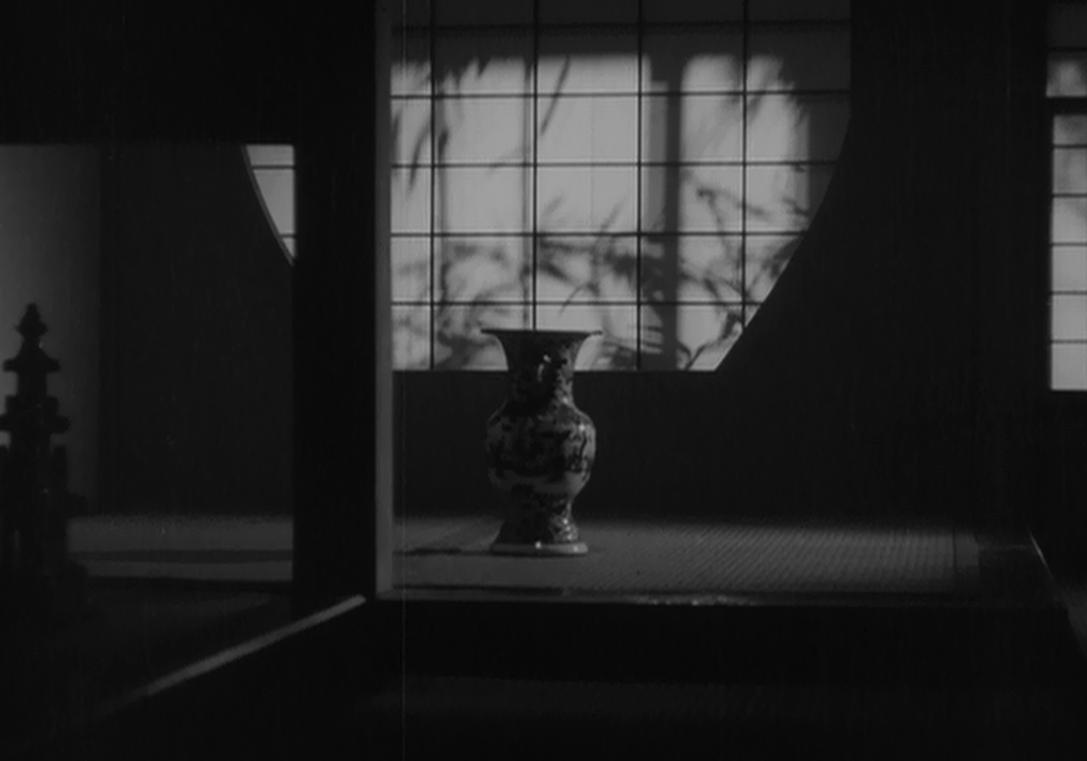
—a still image does it no justice, a moving image shows the passage of time; but the point is the time that passes passes between the vase and tatami. Even in the intransigent stillness it does, since the vase borrows something of the leaves moving behind the rice-paper screen.
To be set on stage, an event occurs in the lived time where we are supported by the elements; it is given a sense of occasion by being set on stage, and its occasion, or the event of the event, becomes translocatable, enabled to be 'replayed' anywhere at any future time. What can we say of this except that it is virtual? So too the encounter of the encounter. Encountered in performance, with an audience, the original encounter re-takes place, is not a copy but in the very classical sense a simulacrum, since it is animated by the virtual.
For a classical sculptor the soul was added at the last. It took great skill and there were those sculptors lambasted for producing only lifeless lumps of marble. In other words, the soul, animating principle of all art, comes at the end. In theatrical perception this means it does not cause the action but, coming at the end, flickers ahead in front of it. Without it the scene is dead.
The problem comes—and it will be seen I have departed completely from both Lingis's and Deleuze's differing concepts of encounter—when taking something into your body. Taking something into your body to be arrived at is what I said embodying emotion was all about, here and in workshop 4. It is what distinguishes theatre from therapy: the cause for therapy is for theatre the effect. And it is desired.
Taking something into your body invokes a depth. I remind myself at this point, the problem that presented itself in workshop 4 came to light in the final thief session: the isolation of the actors; verified in the encounter of those actors who did Minus years ago. They were not isolated, in actual or virtual movement—that is, neither in physical position, in what we might call time, the session's duration, nor in emotion. The emotion was not in them but around; and so the encounter did not occur as a face-to-face or dialogical encounter, or even as what we might recognise to be a dramatic or theatrical one!
Chen and Alex did not really look at each other. However, really looking at each other did, for Minus 2014-2017, form the nexus for the dramatic energy to arise in the invisible work, the exercises we conducted in workshops back then. They had that basis. It has remained strangely intact over the intervening years.
I am thinking in particular of an exercise which the dancers in the group associated with authentic movement. Stand holding hands with another person. Keep eye contact with them for 10mins.
The urge will come to break away, break out laughing, break down crying. Let it. But come back. Sustain the contact; or as is often said, Stay in there.
Stay in the encounter. Once this model of encounter was accepted we could move on to: recognise in the other person you are in eye contact with that they too breathe air, need the ground, feel the warmth, and, magically, have the fluidity of movement. And, make the movement you feel is required by this encounter. Then, where does this lead?
Right now I am starting from that question: where it leads is produced by what goes ahead, or beside, flickers out the side of thought and sight. Back, however, to the problem of isolation. Each of the actors having taken the gesture, a gesture, into their own body, was isolated in space, in workshop 4, with the exception I've named. No encounter was possible. And the scene without Chen and Alex would have flatlined. I by no means intend this as a criticism: we are all on our way, to enlivening the scene.
The problem has to do with these words, emotion, depth. Each actor was in the last workshop confronting the difficulty of embodying and performing both. I have to reiterate at today's workshop what we are doing is acting. If it's not working for you, relax and try another action. Let yourself relax and as much as possible wriggle out from under the burden of performing.
A gesture equals a world. Whether a word, or the slightest movement of a finger, the eye pivoting—a world. The world is where the emotion arises. It is the world of the emotion. That's its test. (If not, relax; try again: there are no bad decisions, but you will get better at making decisions.) And the world is where the encounter takes place (place meaning the translocativity of theatricality as medium, for me, perception). The stage sets the encounter anywhere. Wherever it is, wherever it happens, the encounter comes within the survey of the effect—to say it is desire introduces a strange but provocative possibility: desire is always running ahead like this, towards the virtual object, which is always different to what is actualised; and this also is to say, that the virtual object is fully formed, in the next room and a changeling.
What have we got that I can use today? If the imagination needs a weapon in the war on the imagination being waged at large globally and that weapon is this animating principle, the virtual form and imagined image, of our scenes and workshop sessions, our cause does lie in emotion and its imaginative transformation, the stage being the engine of transformation. Theatrical actualisation runs counter to therapeutic actualisation since the latter's cause is the former's effect. Counteractualisation doesn't however help as it only names the direction, whether from the mental and emotional, trauma, childhood events and encounters, and so on, or to their staging in the worlds summoned by gesture. It even misleads: counteractualisation seems to promise some kind of therapeutic benefit to the theatrical playing out of strong and powerful emotions. In addition, the counter to claiming for theatrical playing out therapeutic benefit also errs in terms of basing drama on conflict and drawing dramatic value from an emotional source. Drama heightens emotion and from heightened emotion comes our theatrical inspiration.
No, I reject that height as I reject depth. Minus equals minus theatre in the specific sense of dramatic heightening and minus therapy in the sense specific to psychological depth. Psychological depth being the depth from which theatre-as-therapy or drama therapy brings difficult aspects of experience, if not the experiences themselves, to the surface. I reject psychological theatre but I also reject theatrical theatre, which is a strange admission today having spent my entire weekend missing the theatrical use of language and the camp talk that tarries as little with lies or with honesty as possible, a desire for effervescent theatrical conversation.
And the most conventional theatricality does not reject depth having a necessary place in drama-training, else it's play, and the most conventional psychological therapy, else it's psychodrama, does not reject the heightening which comes from transferring onto the stage our deepest sources of personal pain. Movement is key which is what the stage does. For Minus the stage is also an engine for transformation, imaginative transformation, in the encounter.
Perhaps we can start to talk about meaning. Pulling out my hair for me means going to the hairdresser for you. Chewing my wrist in anger and frustration for me means chopping off my hand and running away with it for you so that I chase you.
In these cases what has happened to emotion? Have we not slipped from one world, one emotional world, into another? gone from the depth of pain to the height of play in one movement? So that what a thief does might be what a metaphor does. Both pain and play are in the same movement.
A hinge. L. Cardo: hinge, pivot, axis—or the heart, from the Cardo Maximus of Roman civil engineers, mainstreet, around which the city turns; unrelated, it turns out, to καρδία, the etymological root from which is derived cardiac for heart. Imagine a hinge being taken for a heart. (Deleuze invokes this etymology when considering Hamlet's, The time is out of joint.) Where I'd been going to in this thinking-through preceding workshop 5 was towards the idea of the virtual object, cardo for the world around it, world of the emotion, determining the overall direction of the encounter, so that in the gesture and stolen gesture (of language or body) is found the echo and both resonate in the same movement of the world. What I have discovered thinking this through is that in the encounter is found the difference: it is where the virtual object transforms and the imaginative work is the hinge for that transformation. More than virtual to actual, and actual being different, the virtual image changes form in the encounter to be actualised in a scene which it makes sing, by having the theatrical equivalent function of a metaphor in language, an energy. Heart and hinge in the same movement in effect or in two movements to the same energising cause.
